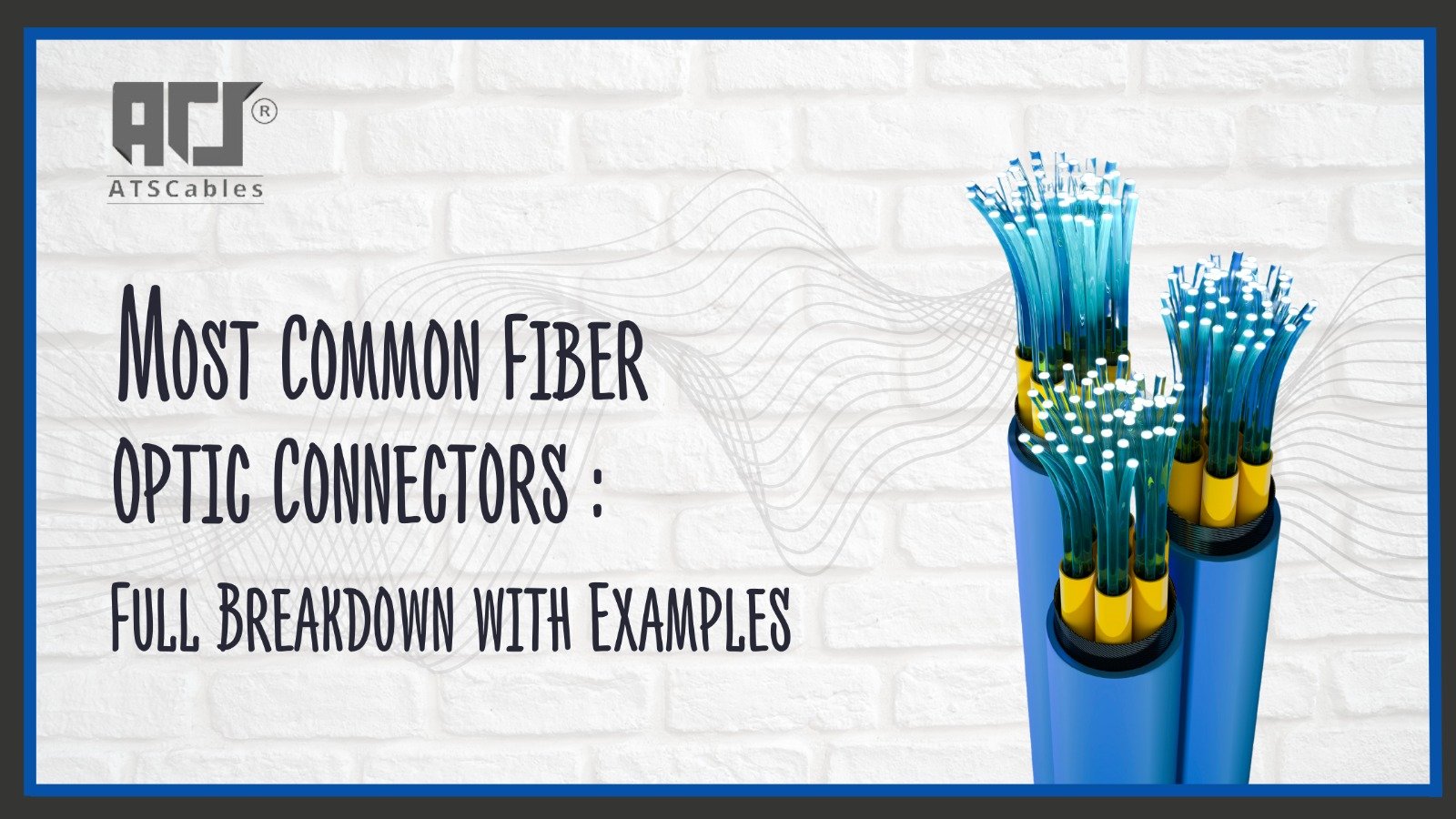
A Guide to the Most Popular Fiber Optic Connectors
Modern communication depends on fiber optic technology as its fundamental structure. The implementation of appropriate connectors represents an absolute necessity for high-speed data transmission to work.
These small components facilitate the uninterrupted functioning of networks through smooth connections. The best connector selection rests on specific requirements between applications and performance necessities as well as system compatibility. The articles describe basic fiber optic connectors by their applications alongside their key characteristics.
Types of Fiber Optic Connectors
Network performance requires the correct selection of fiber optic connectors. Different connectors specialize either in speed performance or durability alongside precision handling. These are the dominant fiber optic connectors together with their designated applications.
SC (Subscriber Connector)
The telecom and broadband networks extensively use SC connectors due to their basic push-pull functionality. The connectors achieve top performance alongside low-loss capabilities and thus serve as a primary choice for high-speed data transmission.
These connectors possess a strong structure which enhances their ability to withstand wear and tear and decreases the necessity for frequent maintenance. Here are their key features:
- Square-shaped with a push-pull locking mechanism
- Common in data centers and telecom networks
- Low insertion loss and excellent repeatability
- Used for both single-mode and multimode fibers
LC (Lucent Connector)
LC connectors are favored in high-density networking environments due to their compact size. Their latch mechanism provides a secure fit, minimizing signal loss. These connectors are commonly found in data centers where space optimization and high-speed data transmission are critical factors. Other features include:
- Small form factor makes it ideal for high-density applications
- Features a latch for a secure fit
- Often used in networking and high-speed data transmission
- Preferred for fiber patch cables due to its compact size
ST (Straight Tip Connector)
ST connectors feature a bayonet-style locking system, ensuring a stable connection in demanding environments. They are commonly used in industrial and military applications where durability matters. Their easy installation and rugged design make them a reliable choice for multimode fiber networks. You also get the following features through it:
- Bayonet-style locking system for secure connections
- Common in industrial and military settings
- Reliable and easy to install
- Works well for multimode fiber applications
MTP/MPO (Multi-Fiber Push On/Pull Off)
MTP/MPO connectors are designed for high-density applications, supporting multiple fiber strands in a single connection. These connectors are essential for data centers and cloud computing, where speed and efficiency are crucial. Their ability to handle bulk fiber connections enhances scalability and network performance. Apart from that, you also get the following features:
- Designed for high-speed, high-density connections
- Supports multiple fiber strands in one connector
- Used in large-scale data transmission and cloud computing
- A go-to option for fiber optic patch cords in data centers
FC (Ferrule Connector)
FC connectors use a threaded design to provide a strong and stable connection, reducing back reflection and signal loss. They are often used in precision environments like labs and fiber optic testing. Their secure fit makes them ideal for single-mode fiber applications. Furthermore, you also get the following features through FC:
- Threaded design for a strong mechanical connection
- Used in labs and environments requiring precision
- Reduces back reflection and ensures stable performance
- Best suited for single-mode fiber applications
Choosing the Right Connector
Different environments demand different connectors. A connector that works well in a high-traffic data center may not be ideal for an industrial setting. Below are key factors to consider when selecting the right fiber optic connector. Here are some considerations when selecting a connector:
- Application: Data centers, industrial settings, or home networks
- Fiber Type: Single-mode vs. multimode
- Insertion Loss: Lower values mean better signal quality
- Connector Durability: High-traffic areas need sturdy designs
- Ease of Use: Some connectors require specialized tools for termination
Common Uses for Each Connector
Each fiber optic connector has a specific purpose. Some are designed for telecom networks, while others are suited for high-density applications. Below is a breakdown of their common uses.
- SC is best for telecom and broadband networks
- LC is preferable for fiber optic patch cables in high-density environments
- ST is ideal for military, industrial, and medical applications
- MTP/MPO is vital for large-scale data centers
- FC is useful in lab testing and high-precision environments
Installation and Maintenance
Proper installation and maintenance ensure a stable and long-lasting fiber optic network. Small issues like dust or improper connections can lead to data loss. Here are some essential guidelines for installation and upkeep. Below are some easy-to-follow installation tips and maintenance guidelines:
- Clean the fiber ends before the connection
- Avoid bending the cable beyond the recommended limits
- Use the correct polishing technique for terminations
- Secure connectors to prevent accidental disconnections
- Regularly inspect for dust and debris
- Use specialized cleaning tools to remove contaminants
- Check for scratches or wear on ferrules
- Replace damaged connectors to avoid signal loss
Conclusion
Understanding fiber optic connectors helps in choosing the right one for your network. Each type has unique benefits suited for specific applications. Whether you’re working with fiber patch cables or large-scale networks, the right connector makes all the difference.
Looking for high-quality connectors? ATS Cables provides reliable options to keep your fiber optic network running smoothly. Check out their selection today!
FAQs
What is the most common fiber optic connector?
The SC connector is widely used due to its easy push-pull mechanism and low signal loss. It’s common in telecom and broadband networks.
What is the difference between single-mode and multimode connectors?
Single-mode connectors work with long-distance signals, while multimode connectors handle shorter distances with wider cores for higher data transmission rates.
How often should fiber optic connectors be cleaned?
Cleaning should be done before every connection and as part of regular maintenance to prevent signal degradation. Dust and dirt can impact performance.
Are LC connectors better than SC connectors?
LC connectors are smaller and better for high-density applications. SC connectors are easier to use and commonly found in standard networks. The choice depends on the application.
keep connected
Get updates by subscribe our weekly newsletter

